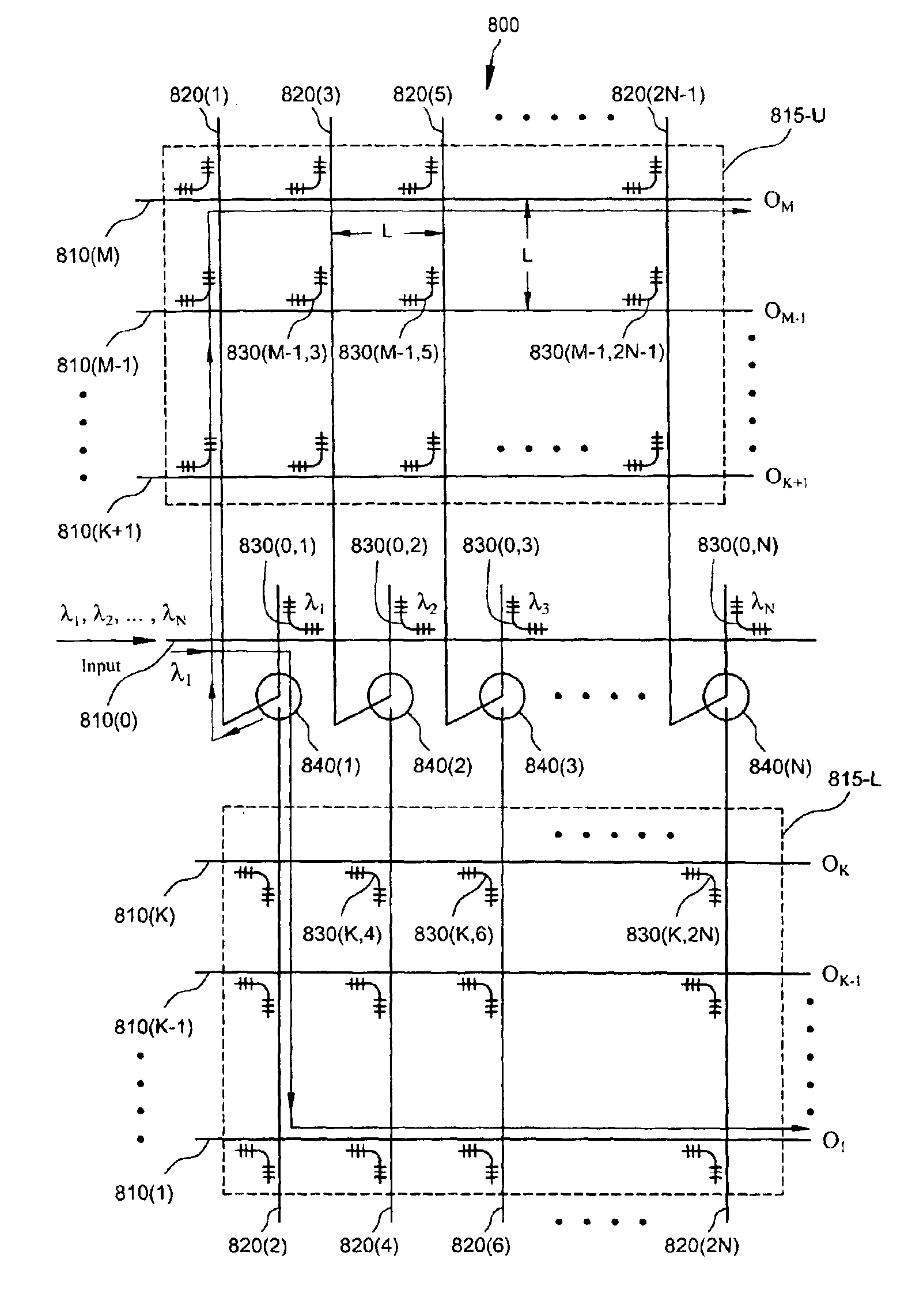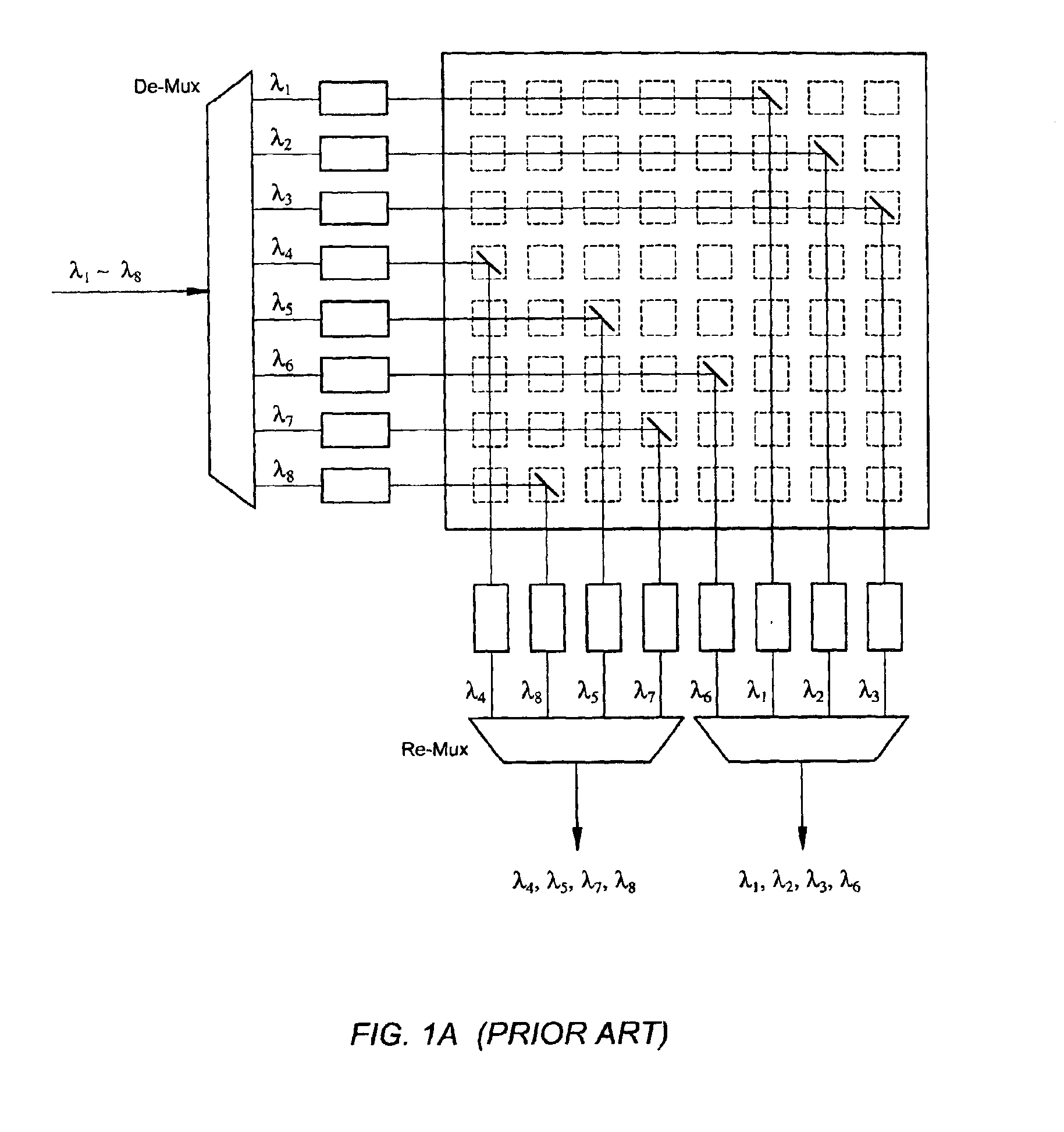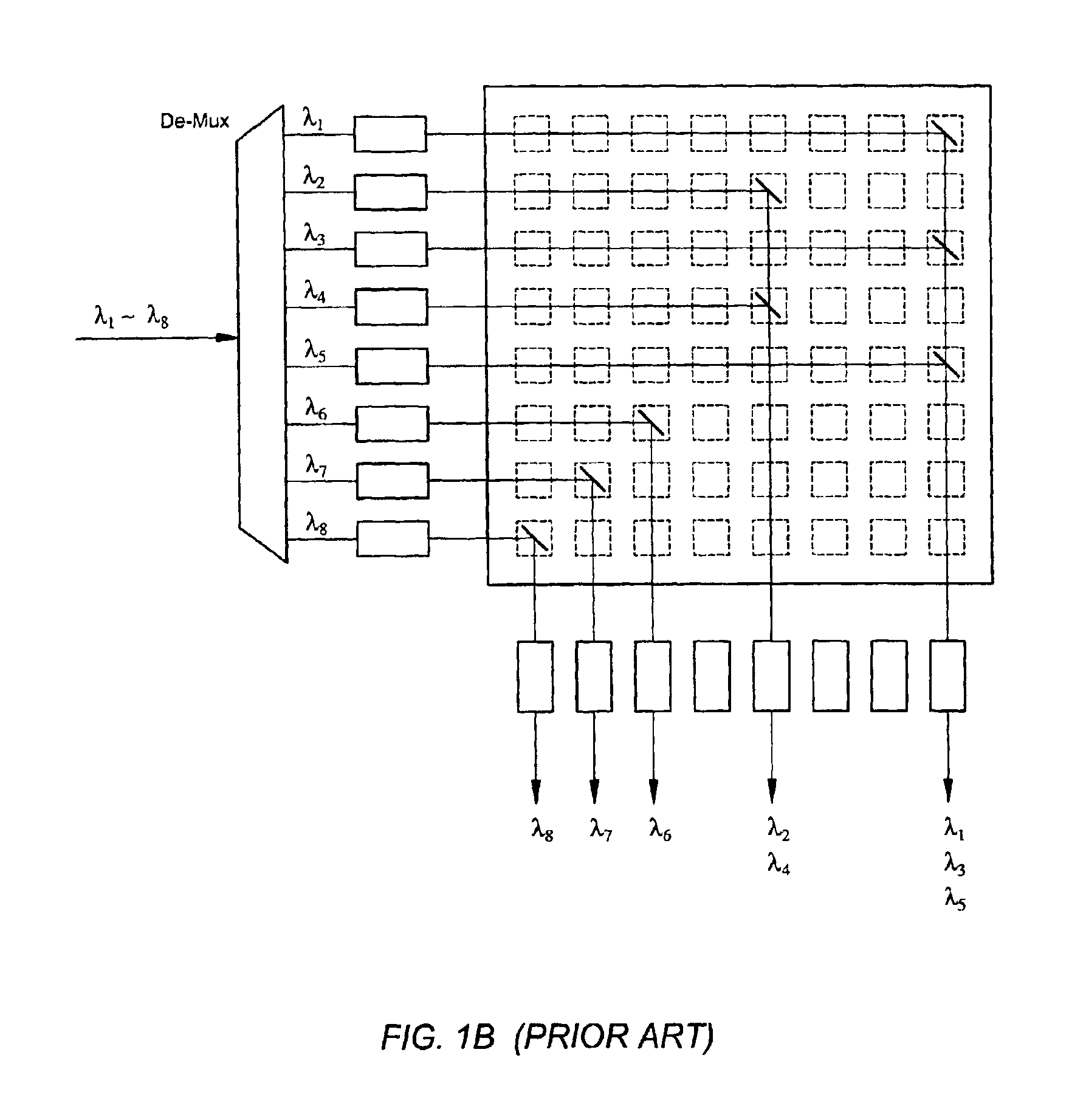Switching matrix configuration for reducing loss
a switching matrix and loss reduction technology, applied in the direction of optical elements, instruments, optical waveguide light guides, etc., can solve the problems of reducing reducing the design limitation of optical transmission through switching systems, and increasing the complexity of system configurations, so as to reduce the size and cost of optical switches, simplify the production of large-scale optical switches, and enhance the strength of gratings
- Summary
- Abstract
- Description
- Claims
- Application Information
AI Technical Summary
Benefits of technology
Problems solved by technology
Method used
Image
Examples
Embodiment Construction
[0025]FIGS. 2A and 2B are schematic diagrams for showing the on and off states respectively of a wavelength-selective bridge waveguide 120 relative to a multi-channel bus waveguide 110. A multiplexed optical signal is transmitted in a bus waveguide 110 over N multiplexed wavelengths λ1, λ2, λ3, . . . λN where N is a positive integer. In FIG. 2A, the wavelength selective bridge waveguide 120 is moved to an on-position and coupling to the waveguide 110. An optical signal with a central wavelength λi particular to the Bragg gratings 125 disposed on the bridge waveguide 120 is guided into the wavelength selective bridge waveguide 120. The remainder optical signal of the wavelengths λ1, λ2, . . . , λi−1, λi+1, . . . , λN is not affected and continues to transmit over the waveguide 110. The Bragg gratings 125 have a specific pitch for reflecting the optical signal of the selected wavelength λi onto the wavelength selective bridge waveguide. In FIG. 2B, the wavelength selective bridge wave...
PUM
 Login to View More
Login to View More Abstract
Description
Claims
Application Information
 Login to View More
Login to View More - R&D
- Intellectual Property
- Life Sciences
- Materials
- Tech Scout
- Unparalleled Data Quality
- Higher Quality Content
- 60% Fewer Hallucinations
Browse by: Latest US Patents, China's latest patents, Technical Efficacy Thesaurus, Application Domain, Technology Topic, Popular Technical Reports.
© 2025 PatSnap. All rights reserved.Legal|Privacy policy|Modern Slavery Act Transparency Statement|Sitemap|About US| Contact US: help@patsnap.com



